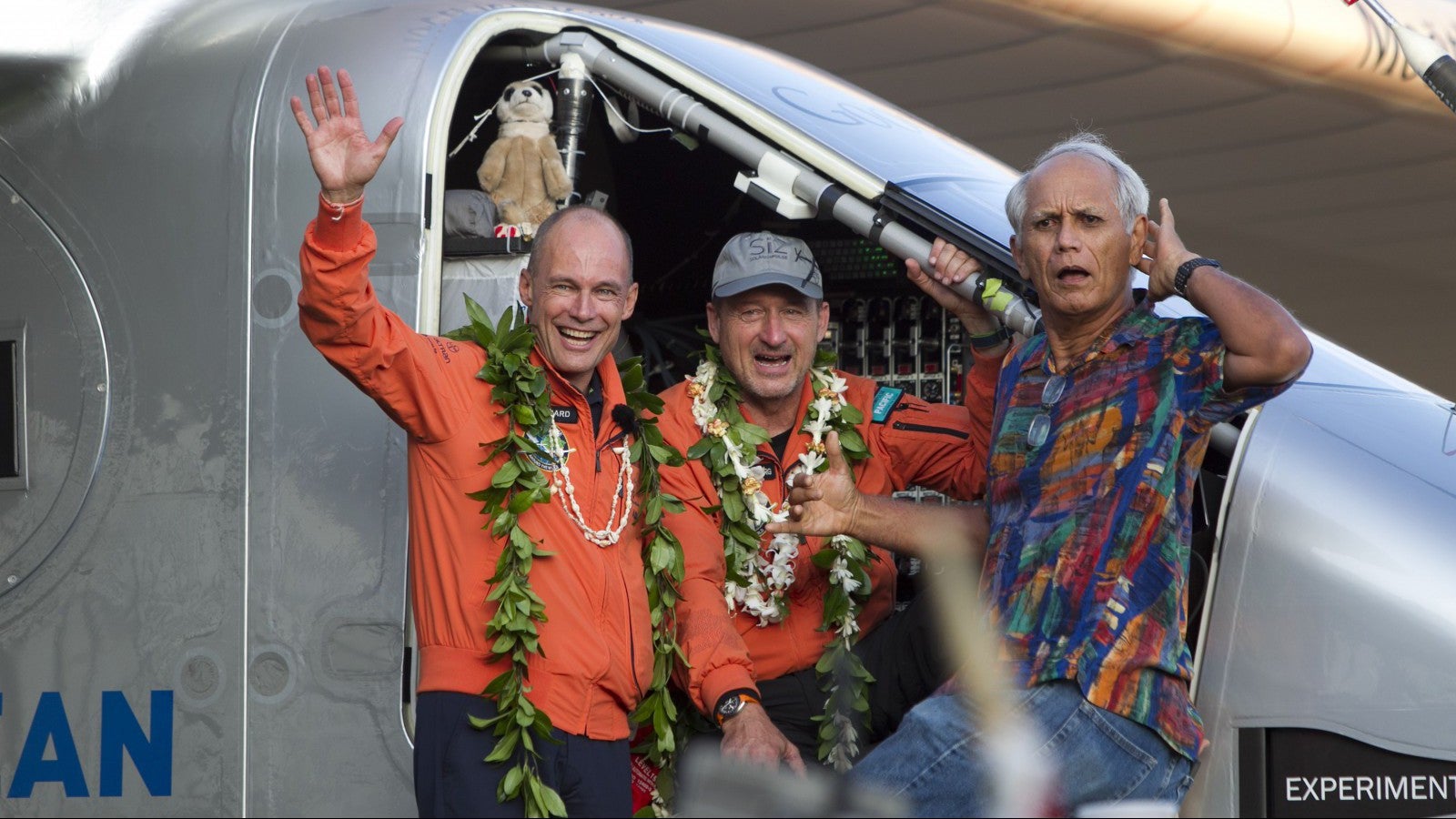The solar-powered plane trying to fly around the world has been grounded until 2016
The Solar Impulse 2 is grounded in Hawaii and may not fly again until April 2016, its team of pilots announced today—a significant setback in their attempt to make a historic round-the-world trip in a fully solar-powered airplane.


The Solar Impulse 2 is grounded in Hawaii and may not fly again until April 2016, its team of pilots announced today—a significant setback in their attempt to make a historic round-the-world trip in a fully solar-powered airplane.
The problem with the plane, which gets at the heart of why it has been so difficult to develop airplanes that don’t rely on jet fuel, was with its batteries. The crew says the plane suffered “irreversible damage” due to overheating batteries on its way to Hawaii from Japan, in a 118-hour-long crossing that broke the world record for longest nonstop solo flight. The single-seat plane landed safely near Honolulu on July 3, completing the eighth of twelve planned segments in its journey, which began in March.
“The damage to the batteries is not a technical failure or a weakness in the technology but rather an evaluation error in terms of the profile of the mission and the cooling design specifications of the batteries,” the team said in a statement. ”The temperature of the batteries in a quick ascent/descent in tropical climates was not properly anticipated.”
The plane will be parked at the University of Hawaii while repairs are made and the team researches ways to prevent another overheating episode. They still plan on finishing their circumnavigation of the globe, albeit on a slower timeline than planned.
Separately, Airbus and an independent French pilot each flew across the English Channel in battery-powered planes last week.